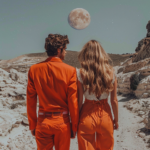Don’t Render – Remember: A Pragmatic Guide to Non-Rendering Practice
Proposed Table of Contents & Chapter Abstracts
| # | Chapter | Purpose & Key Topics (all will be expanded in the final guide) |
|---|---|---|
| 0 | Preface – Why “Non-Rendering” Now? | • The overload of mental/sensory “render loops” in the digital & cognitive age. • Non-rendering as antidote: reclaiming raw perception, presence & cognitive bandwidth. • How to use this book (iterative, experiment-driven, journal-friendly). |
| 1 | The Map Before the Territory | ### 1.1 What is Rendering? — Etymology (computer graphics → cognitive science → contemplative traditions). — Micro-rendering (inner narrative) vs. macro-rendering (social scripts). ### 1.2 Non-Rendering Defined — Distinction from suppression, dissociation, escapism. — Core premise: direct experience without secondary compilation. |
| 2 | The Neuroscience & Psychology of Over-Rendering | ### 2.1 Default Mode Network & Story-Generation. ### 2.2 Prediction Machines: How brains compress reality. ### 2.3 From Adaptive to Maladaptive Rendering (rumination, anxiety, bias). ### 2.4 Non-Rendering & Neuroplasticity – early findings. |
| 3 | Lineage & Parallels | • Zen “beginner’s mind” & shikantaza. • Dzogchen’s rigpa. • Cognitive defusion in ACT. • Minimal phenomenology (Husserl → Varela). • The book does not copy these traditions but stands on their shoulders. |
| 4 | Foundational Skills: Grounding & Safety | ### 4.1 Somatic Anchors (breath, posture, proprioception). ### 4.2 The Three-Layer Safety Net (body, environment, community). ### 4.3 Journaling Protocol: “Render Logs.” |
| 5 | Core Practice I – Micro-Sessions (60-Second Unrenders) | • Cue, routine, reward loop. • Eyes-open “snapshot” practice. • “Label & drop” method (note → let go). • Troubleshooting rapid-fire thoughts. |
| 6 | Core Practice II – Formal Non-Rendering Sits | ### 6.1 Setup (time, seat, timer). ### 6.2 Five-Step Progressive Descent: 1. Sensory sweep 2. Allowing 3. Whole-field attention 4. Non-interference 5. Open-ended abiding. ### 6.3 Typical Phenomena (spacing-out, micro-dreams, clarity waves). |
| 7 | Core Practice III – Dynamic Non-Rendering (Life-in-Motion) | • Walking, eating, coding, Zoom-calls. • “Point-of-render” cueing. • Micro-interruptions & “null frames.” |
| 8 | Deep Dive Labs – 30-Day Protocols | ### 8.1 Baseline Week (quantify your render density). ### 8.2 Taper Week (reduce optional render sources: news, social media). ### 8.3 Immersion Week (2 × 30-min sits + dynamic cues). ### 8.4 Integration Week (re-introduce complexity consciously). |
| 9 | Obstacles & Dark Alleys | • Apathy illusion. • Spiritual bypass. • Trauma resurfacing. • When to seek guidance. |
| 10 | Measuring the Immeasurable | ### 10.1 Qualitative Metrics (clarity, reactivity, creative latency). ### 10.2 Quantified-Self Add-ons (HRV, focus trackers). ### 10.3 Designing personal A/B experiments. |
| 11 | Applications & Synergies | • Creativity & flow states. • Conflict de-escalation. • Software/UI design (render-minimal interfaces). • Sustainability of attention economy. |
| 12 | Advanced Terrains | ### 12.1 Non-Rendering & Non-Dual Insight. ### 12.2 “View, Meditation, Action” Revisited. ### 12.3 Teacher, Sangha, AI-guided feedback – future possibilities. |
| 13 | Closing Chapter – Living Unrendered | • From practice to trait. • “Ordinary mind is the Way” revisited. • A manifesto for post-render culture. |
| Appendices | A. Glossary • B. Daily log templates • C. Recommended reading & audio • D. FAQ • |
Notes for Development Team
Unique Selling Point: first full-spectrum manual that reframes classical “non-conceptual” meditation into a contemporary, secular skill set for cognitive load reduction and creative clarity.
Tone: modern, research-informed, but with experiential warmth; short anecdote boxes, comics, and QR-linked audio practices.
Length target: 250-300 pages, including graphics.
Audience: tech-savvy knowledge workers, contemplative practitioners, therapists, UX designers.





